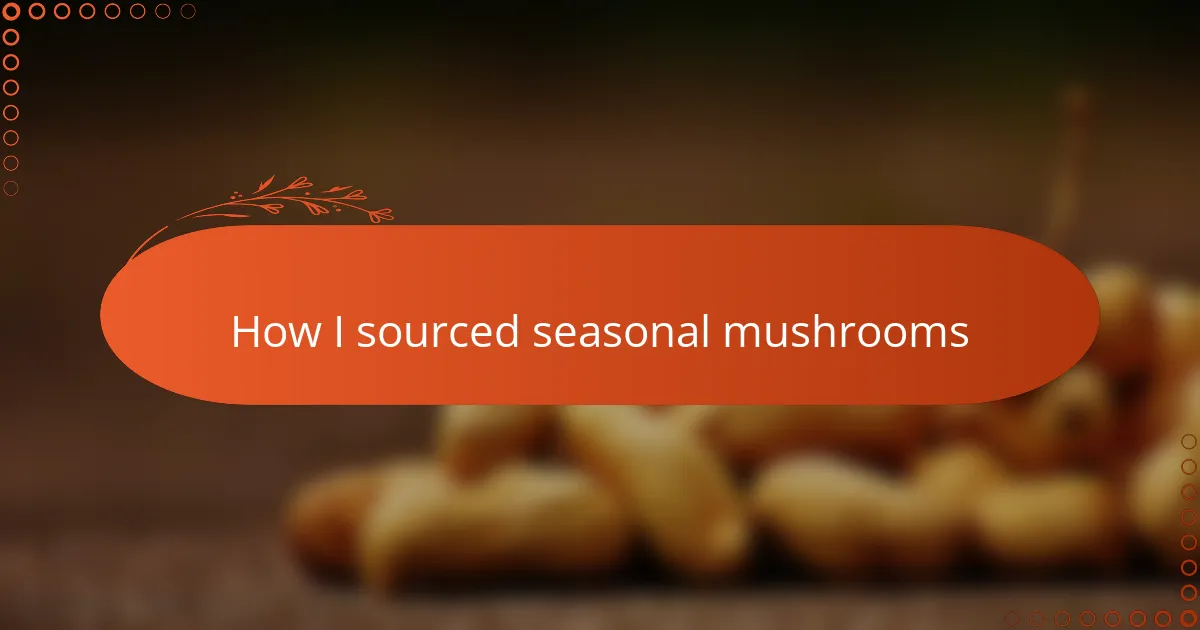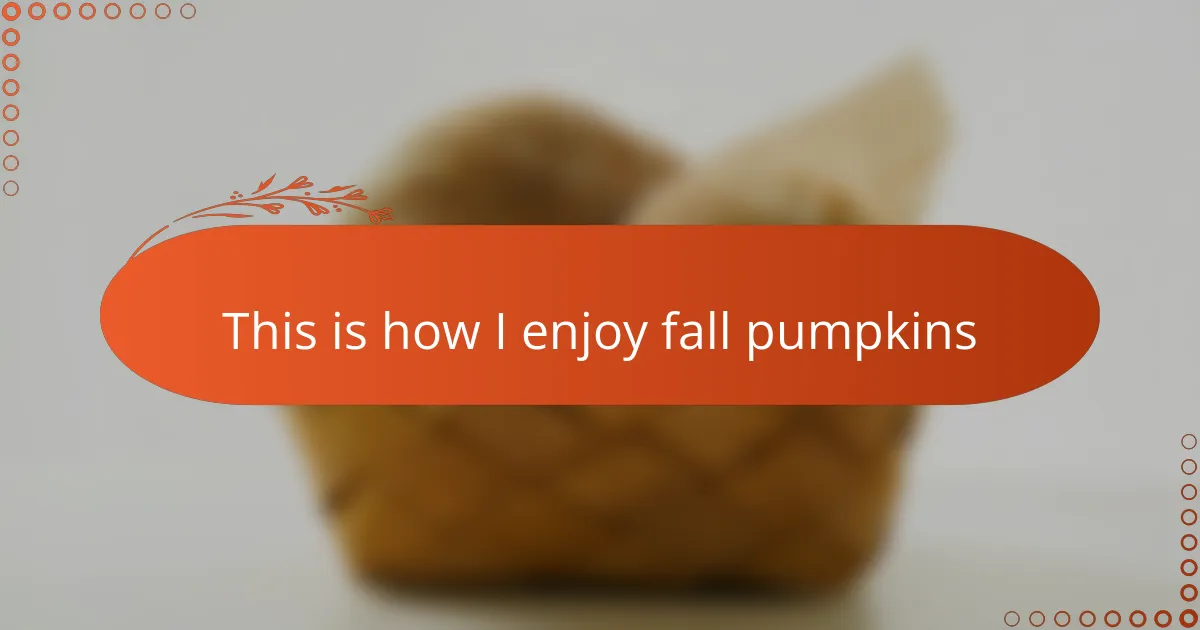Key takeaways
- Seasonal mushrooms emerge at specific times of the year, thriving under perfect temperature and moisture conditions, creating a unique foraging experience.
- Foraging requires the right tools, such as a sharp knife, a breathable basket, and a soft brush for cleaning, to ensure sustainable mushroom harvesting.
- Safety is crucial; never eat mushrooms without proper identification and avoid collecting near polluted areas to ensure a safe foraging experience.
- Using fresh seasonal mushrooms in cooking enhances meals with unique flavors and textures, encouraging mindfulness and appreciation of nature’s cycles.
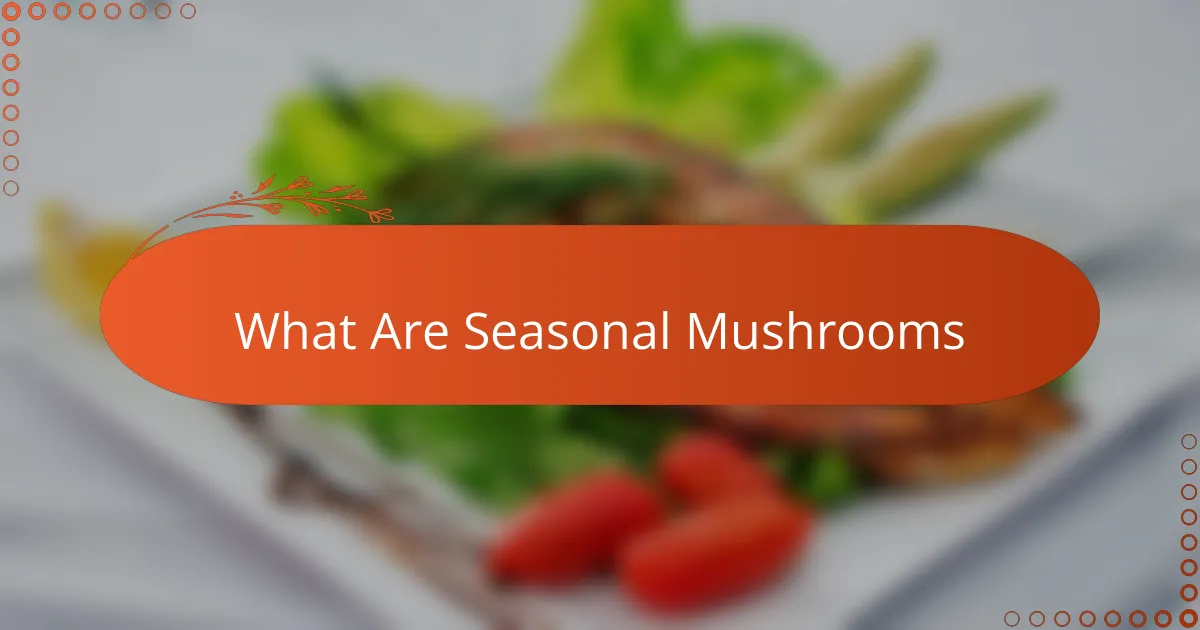
What Are Seasonal Mushrooms
Seasonal mushrooms are simply varieties that appear at specific times of the year, flourishing when conditions like temperature and moisture align perfectly. I remember the thrill of spotting morels only in spring, their honeycomb caps signaling the start of mushroom season. Have you ever wondered why certain mushrooms vanish as quickly as they come? It’s nature’s way of reminding us to savor every fleeting moment.
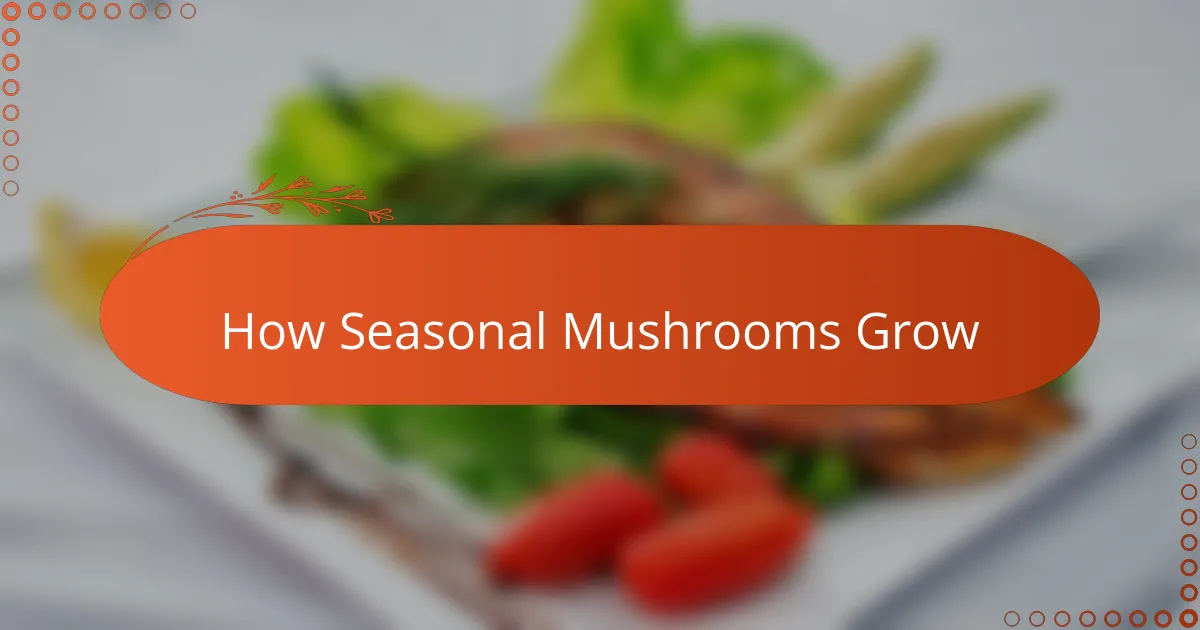
How Seasonal Mushrooms Grow
Mushrooms don’t grow like typical plants; instead, they emerge from tiny threads called mycelium hidden beneath the soil or decaying wood. I find it fascinating how these thread networks quietly spread underground, waiting for the right burst of rain and temperature to send those familiar caps poking through. Have you noticed how after a good rain, the forest floor suddenly seems sprinkled with little fungal treasures?
The timing of mushroom growth feels almost magical to me. It’s as if the mushrooms are in tune with the season’s mood, responding to subtle shifts in moisture and warmth that only they can sense. I remember walking through damp woods in autumn, spotting chanterelles sprouting in golden clusters, and realizing that their appearance is truly a seasonal signal, not just random chance.
What’s incredible about seasonal mushrooms is how briefly they appear. They grow quickly but vanish just as fast, leaving you to wonder if you imagined the whole experience. This fleeting nature makes harvesting them feel like an exclusive invitation from the forest — one you have to accept before it’s gone.
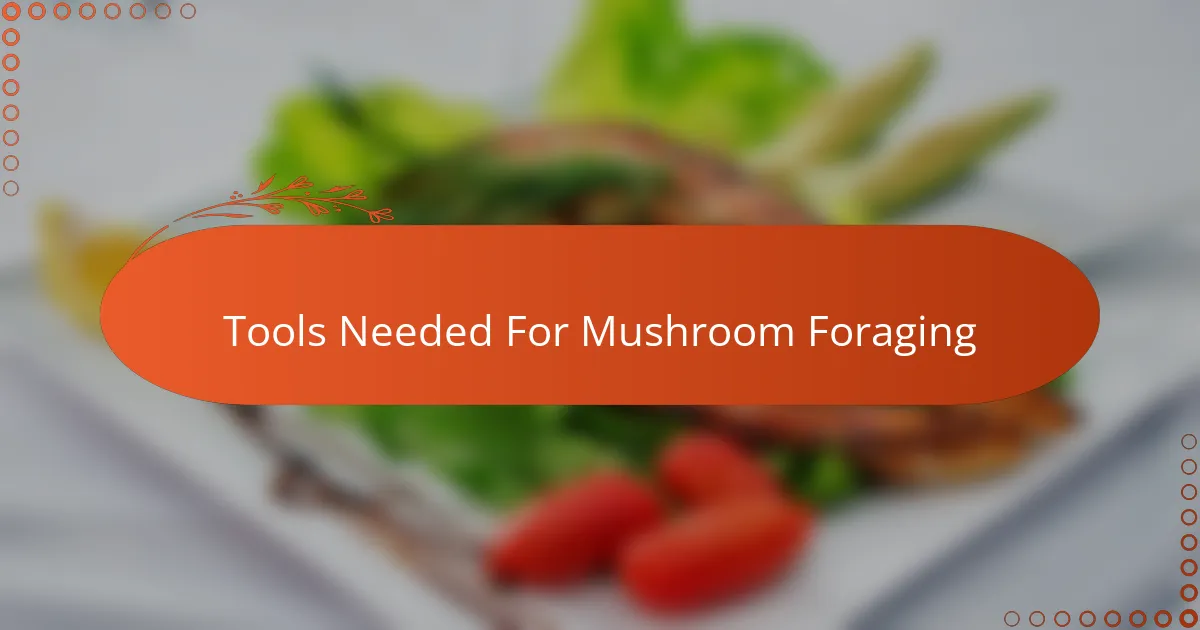
Tools Needed For Mushroom Foraging
When I first started mushroom foraging, I quickly learned that having the right tools makes all the difference. A small, sharp knife is essential—not just for cutting mushrooms cleanly but for protecting the delicate mycelium beneath, which keeps the forest floor healthy for future growth. Have you ever tried pulling mushrooms out by hand? It’s tempting but can harm the entire patch.
A woven basket or mesh bag is another must-have. Unlike plastic bags, these allow spores to drop as you walk, helping to spread the mushrooms’ magic for the next season. I remember feeling like a mini forest steward carrying my haul in a nice, breathable basket—it added to the connection I felt with nature.
Finally, don’t forget a soft brush for gently cleaning dirt off your finds right in the field. It’s a small thing, but it means fewer surprises when you get back home to cook. I often find this little step calming, almost like preparing my treasures with care before they even hit the kitchen. Have you ever experienced that moment of quiet appreciation before the first bite? It’s truly special.
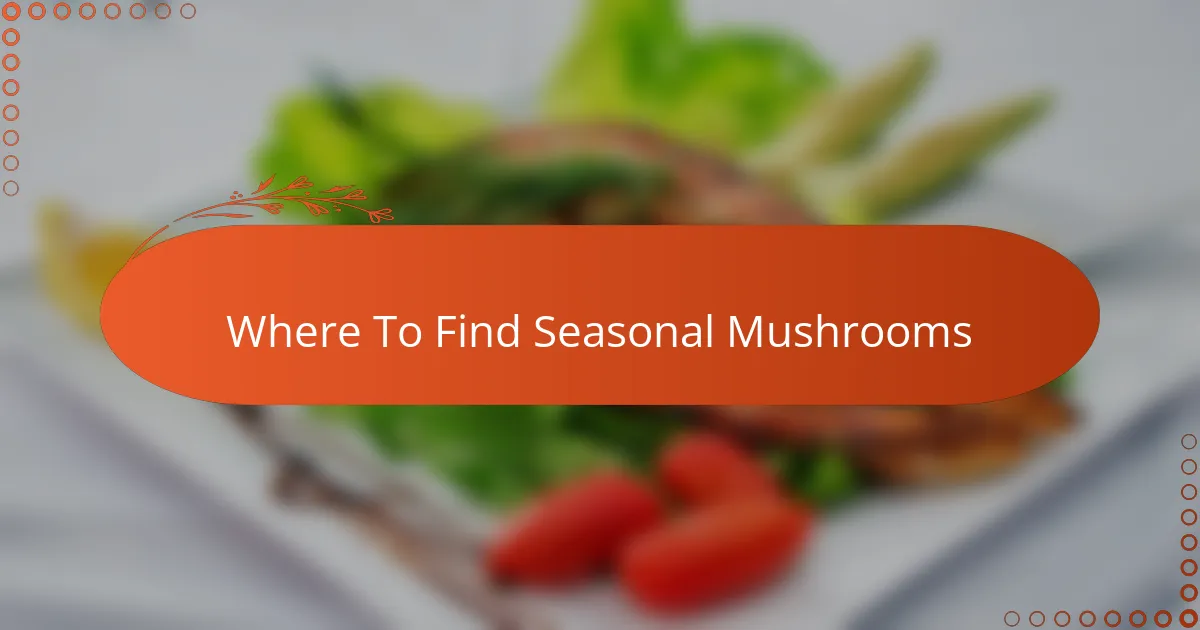
Where To Find Seasonal Mushrooms
I’ve found that the best places to gather seasonal mushrooms are often quiet woods where fallen leaves and decaying logs create the perfect home for them. Have you ever wandered through a forest after a gentle rain, only to stumble upon mushrooms tucked under ferns or nestled against tree trunks? It’s moments like those that make you feel like you’ve uncovered a hidden secret.
Sometimes, I head to local parks or nature reserves where the environment supports a diverse fungal community. What surprises me is how these modest spots, often overlooked by many, can be bursting with chanterelles or boletes during the right season. It’s a reminder that you don’t always have to travel far to find nature’s bounty.
Then there’s the edge of meadows and grassy clearings, which can be excellent mushroom habitats too. I recall a cool autumn evening when I discovered a patch of oysters growing on a fallen alder—it felt like stumbling upon a treasure chest in my own backyard. Have you noticed how these transitional spaces between forest and open land often hold hidden gems?
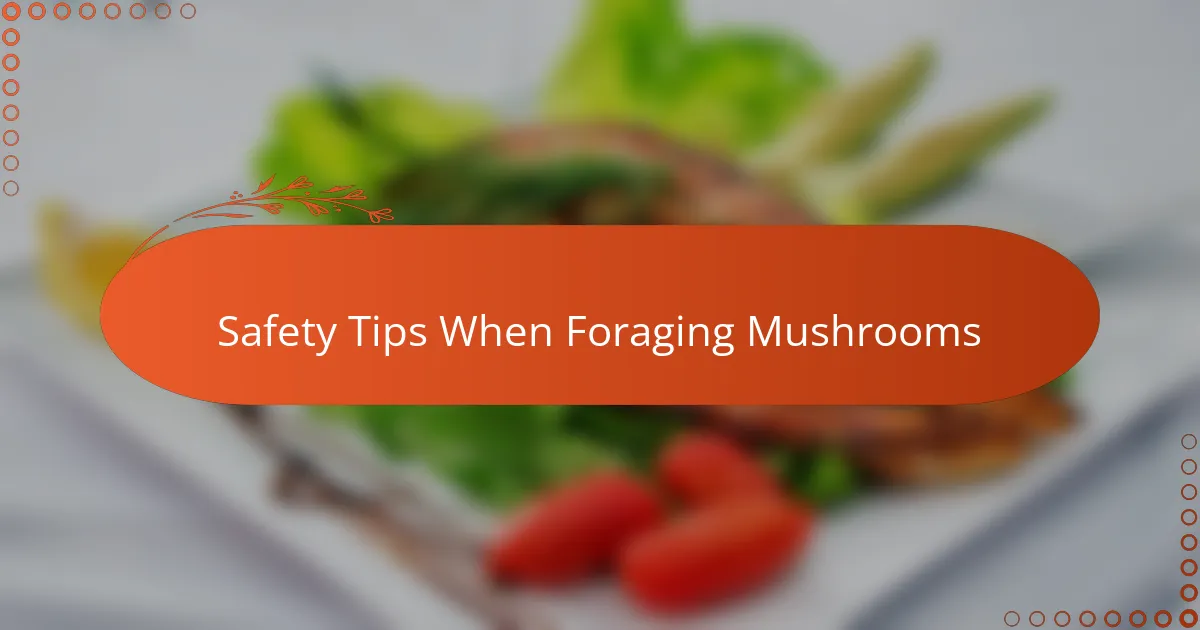
Safety Tips When Foraging Mushrooms
When I first started foraging, safety was always at the forefront of my mind—after all, not all mushrooms are friendly. I quickly learned to never eat a mushroom unless I was absolutely certain of its identity, often double-checking with field guides or apps. Have you ever hesitated over a mushroom that looked tempting but unfamiliar? That caution can literally save your life.
I also make it a rule to avoid mushrooms growing near roadsides or polluted areas, as they can absorb harmful chemicals. It’s fascinating to me how these organisms soak up their environment, making us part of that cycle when we eat them. Paying attention to location helps keep the mushroom experience pure and safe.
One habit I developed early on was collecting a small sample of any new mushroom to show an expert or post in a foraging community. It feels a bit like detective work, but getting confirmation eased my nerves and deepened my appreciation for the art of identification. Have you ever felt that mix of excitement and respect when learning something new in the wild? That balance is key to safe and rewarding foraging.
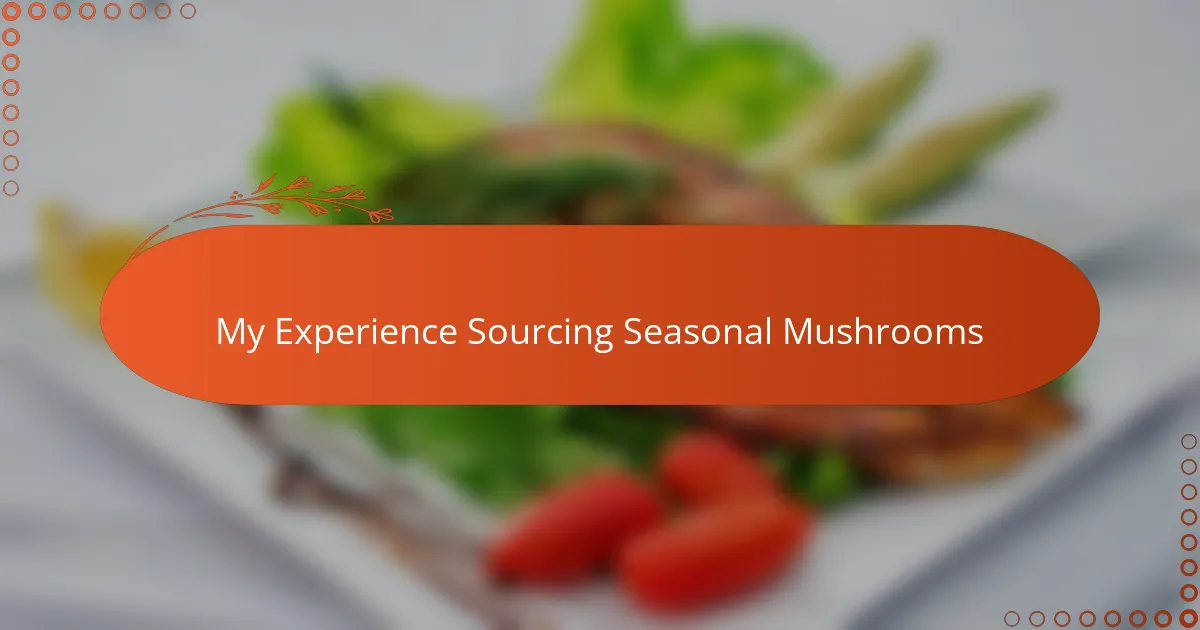
My Experience Sourcing Seasonal Mushrooms
Sourcing seasonal mushrooms has been one of the most rewarding experiences in my homesteading journey. I recall the first time I came across a patch of morels after a heavy spring rain—it felt like I had stumbled upon hidden gold nestled among the leaves. That moment of discovery never loses its magic, and it reminds me how patient and attentive you need to be when foraging.
What surprised me most was how quickly the window for harvesting these mushrooms can close. One weekend, I returned to a spot brimming with chanterelles only to find it nearly bare just days later. Have you ever raced against time like that in nature? It’s a thrilling challenge that keeps me coming back each season.
Over time, I’ve learned to read the land a little better—the right mix of moisture, temperature, and even the smell of damp earth signals a good day for mushroom hunting. It sometimes feels like the forest itself is whispering clues, inviting me to explore and savor its fleeting treasures. That connection is what makes sourcing seasonal mushrooms deeply personal for me.
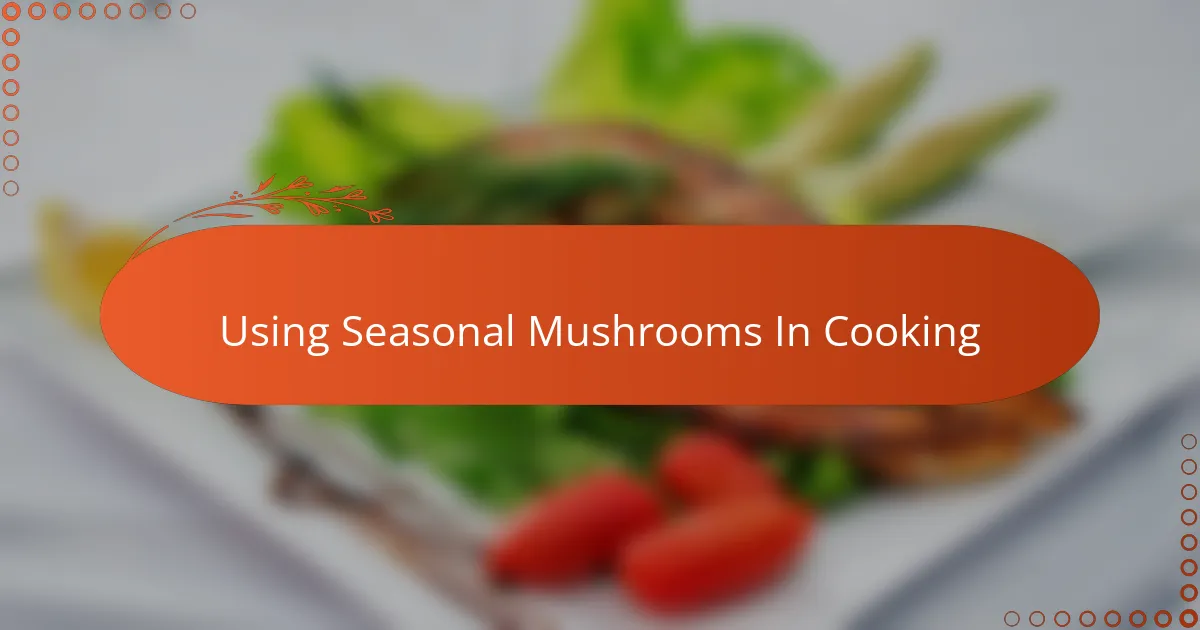
Using Seasonal Mushrooms In Cooking
Using seasonal mushrooms in cooking transforms ordinary meals into something truly special. I’ve found that their unique textures and earthy flavors bring an authenticity that store-bought varieties just can’t match. Have you ever cooked with fresh chanterelles straight from the forest? The subtle nutty taste adds depth you don’t get anywhere else.
One thing I’ve learned is that seasonal mushrooms require gentle handling in the kitchen. Their delicate nature means quick sautéing or simple roasting often works best to highlight their natural character. I remember preparing a simple garlic and herb sauté with morels that turned into an unforgettable dinner—not because of fancy techniques, but because the mushrooms were perfectly fresh and treated with care.
Cooking with mushrooms that appear only briefly in the season also feels like honoring nature’s timing. There’s a special satisfaction in planning meals around what’s available right now, knowing this flavor won’t be here tomorrow. Doesn’t that make every bite feel a bit more precious? I believe that seasonal mushrooms invite us to slow down and savor the moment, both in the forest and at the table.
